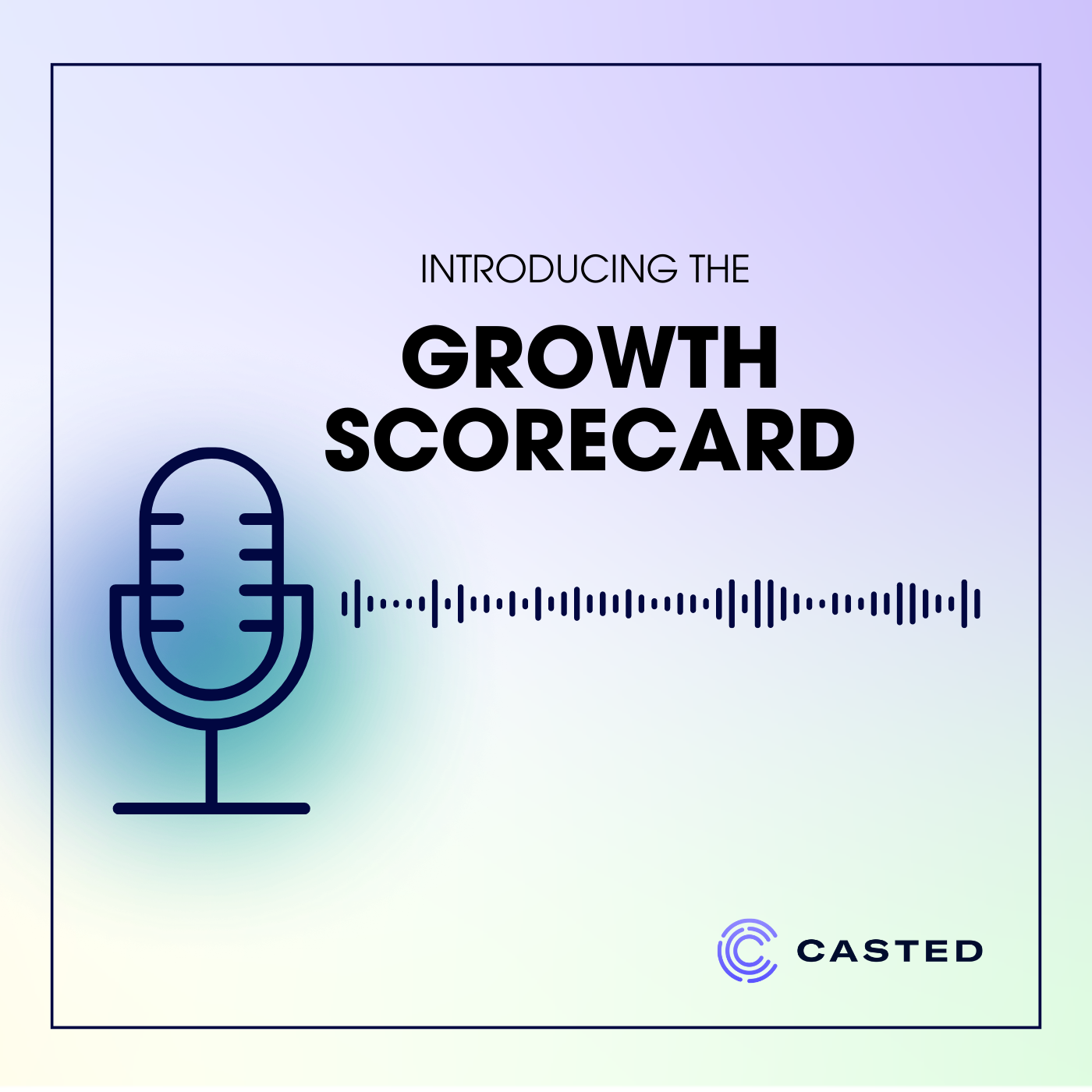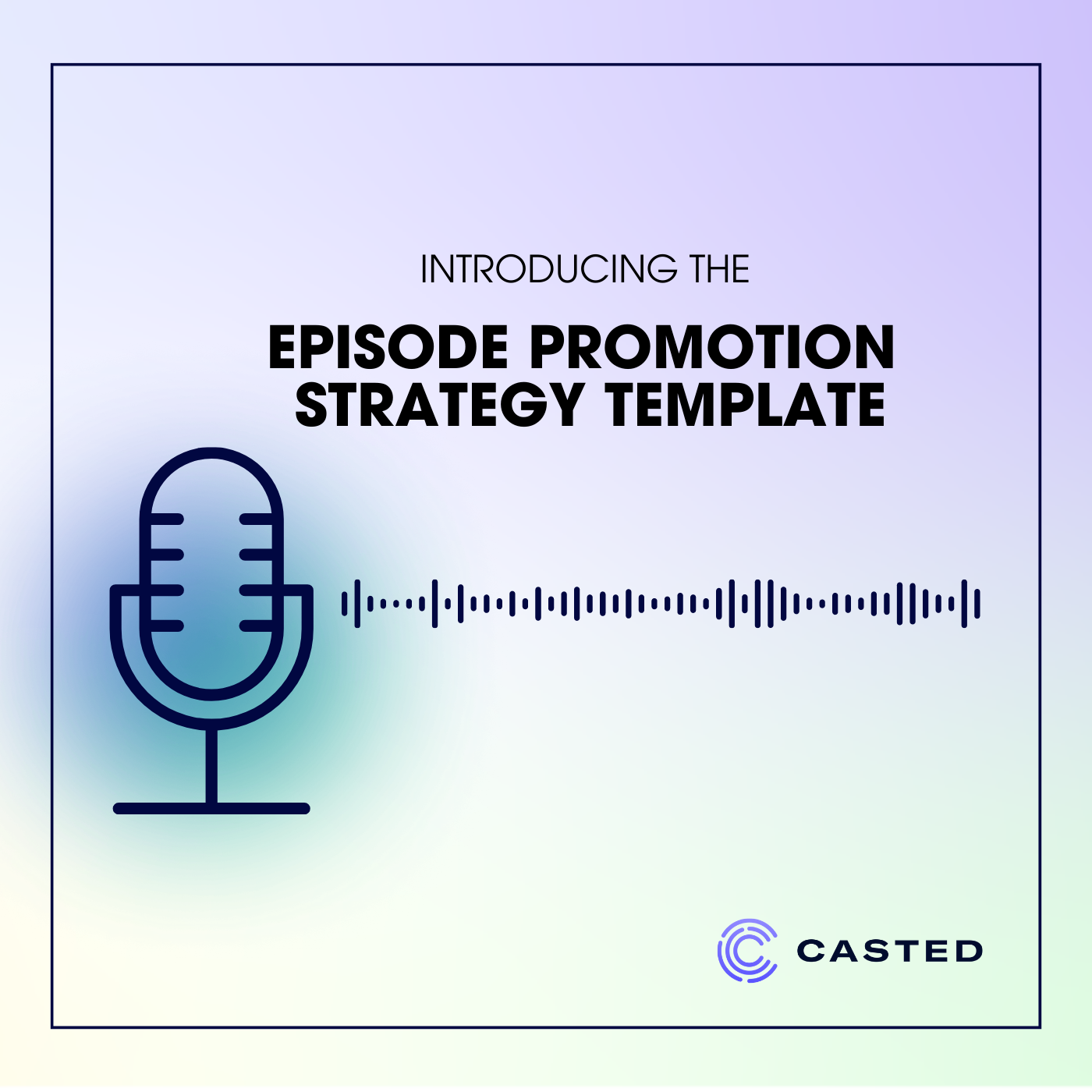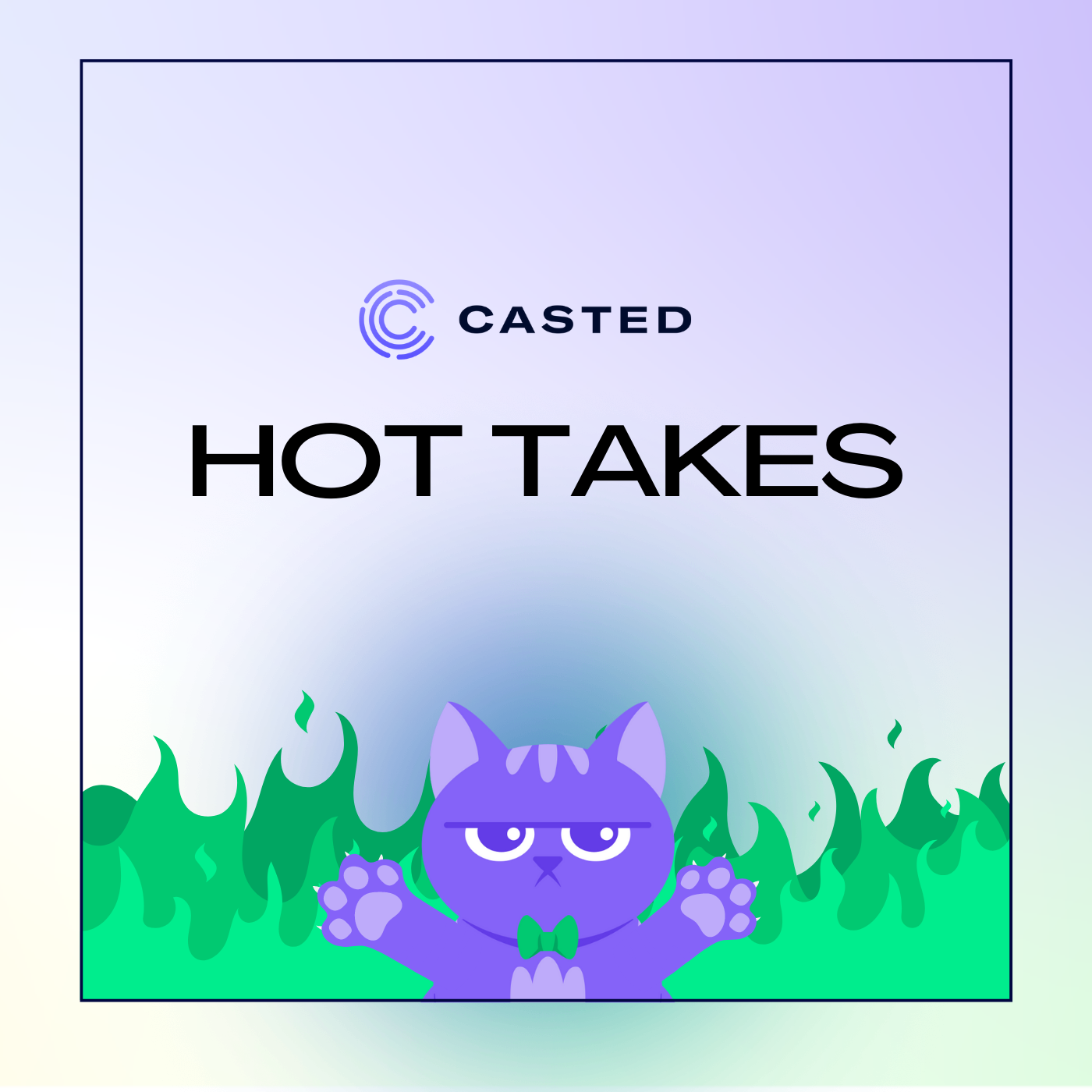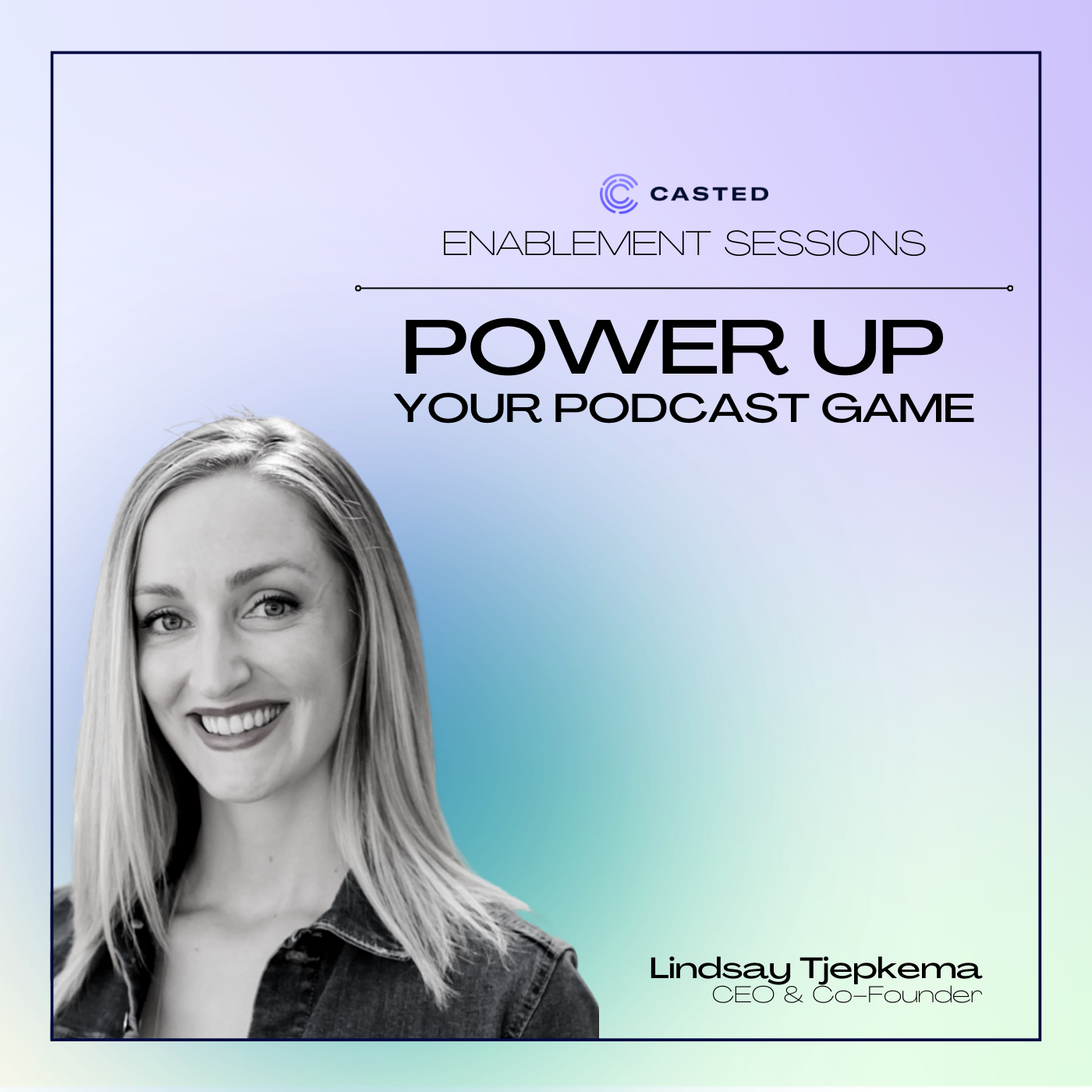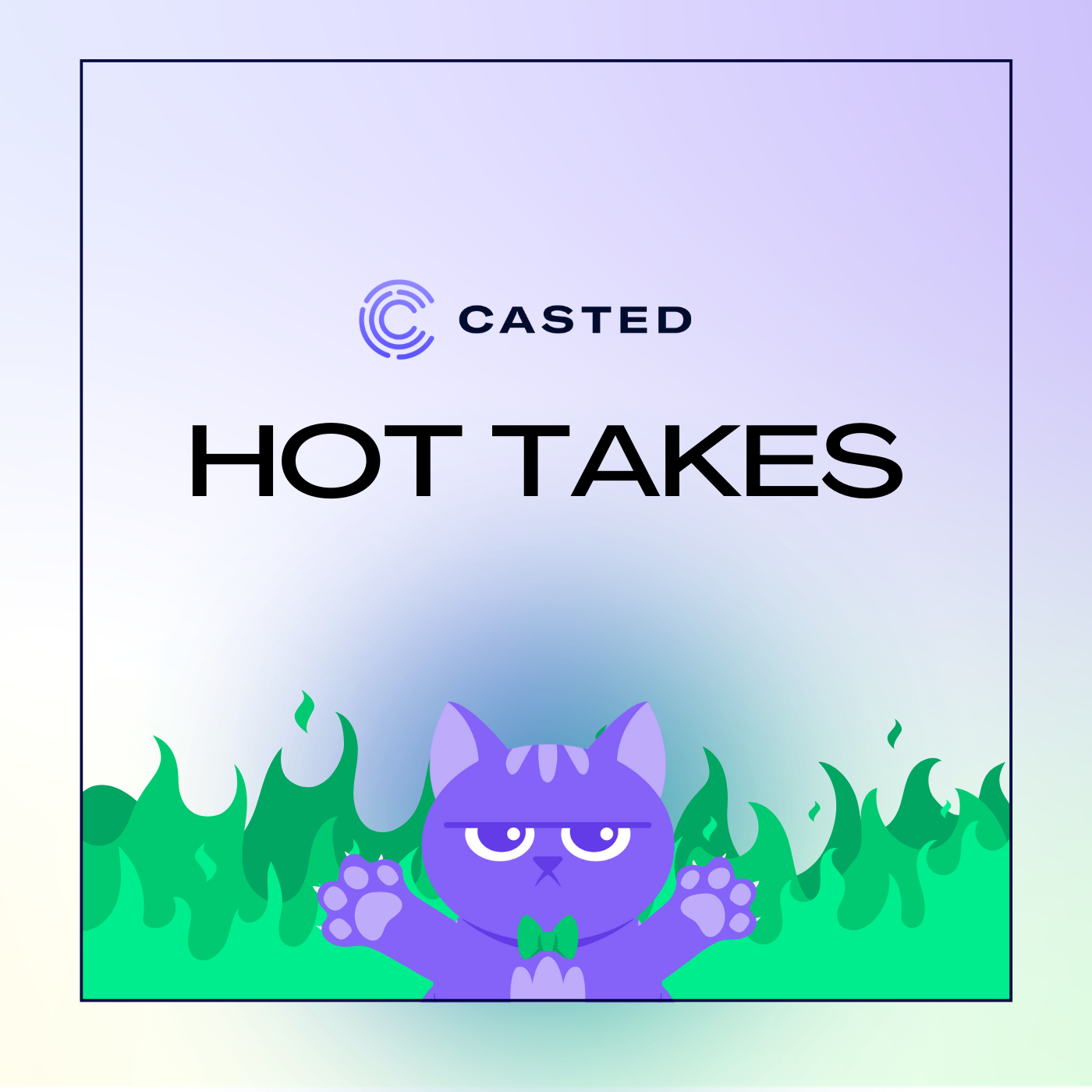Podcast Growth Scorecard | Tracking Metrics for Success
- 0.5
- 1
- 1.25
- 1.5
- 1.75
- 2
Katie: As you start growing your show, keeping track of your metrics and performance through a scorecard method is a really great way to identify trends and opportunities. To help you get started, we've created a growth scorecard template you can leverage for your own podcast. Start with this template by making your own copy and personalize it to really make it your own. As we take a look at the template, you'll see that there are three tabs: Weekly, Episodes and Qualitative. We're going to start with the "Weekly" tab. This tracks a variety of metrics week over week. Looking at the top row, you'll see column headers that indicate date, week one, date, week two, so on and so forth. The idea here is that you start with the date that you begin tracking and have that recur weekly across your row. As a best practice, we recommend starting your week on a Sunday or a Monday just to keep things clean and consistent. The first metric that you'll be tracking are episodes published, and this is really just a "Y" for yes or "N" for no, confirming that you did or did not publish that week. This helps you ensure that you're publishing consistently and holding yourself accountable to the publishing cadence that you've committed to. If you've committed to a weekly publishing cadence, then every week should have a "Y" for yes, unless you're on a season break or hiatus. Similarly, if you've committed to a bimonthly publishing cadence, then you're going to have a "Y" for yes every other week and an "N" for no every other week. You get the picture. Next is tracking subscribers. Unfortunately, subscribers is not something that's available within the Casted platform. You'll have to leverage the podcasting apps to get this number. We actually have a help article with links to how to do this across the most popular podcasting platforms and it's linked in the resources below on this page. Subscribers are important because these are the folks that have intentionally subscribed to or followed your podcast and want to be notified when a new episode is published. As you input the subscriber total each week, the template will calculate week- over- week growth for you. Any growth in the positive will be reflected as green and any growth in the negative will be reflected as red. This is done through a conditional formatting and can be changed to align more with your goals. You can do that by highlighting the row, right clicking on the row and selecting conditional formatting. Under the conditional format rules, you can click on each of them to alter the rules. Audience and Impressions will be tracked in Casted. Total Audience is going to measure Downloads on the podcast apps as well as Plays on a Casted web player. While subscribers capture who has intentionally followed or subscribed to your podcast, Audience is capturing those who have listened to it, including those who have just dropped in and maybe listened to your podcast for the first time. Impressions capture Downloads and Plays as well, but it also includes Visits to any page that a Casted web player is present on. These visits do not result in a play, so you can see who's visiting your podcast but not necessarily being enticed to listen. To find Total Audience and Total Impressions in Casted, you first want to go to the collection that you're measuring. From there, you're going to select Metrics. Your report will default to the last seven days. So if you're pulling metrics at the start of the week, you can leave it on the last seven days. If you need to customize your range, you can do so by clicking the last seven days button and selecting your range on the calendar. Total Audience and Total Impressions will be found here. Similar to subscribers, as you input your Audience and Impression metrics, the week-over-week growth percentage will be calculated automatically following the same formatting rule where anything in the positive is green and anything in the negative is red. Average Consumption Rate is another metric that's found in Casted. You can find that in the same report that we just reviewed by looking at Average Completion Time. Something to note here is that Average Completion Time is only measurable for plays or in other words, any engagement that takes place on a Casted web player. Podcast app downloads only show that the episode was downloaded and doesn't show length of consumption. The last two metrics on this page align with your Episode Promotion Strategy. To track social posts, you're going to input the number of posts you've made across each social channel in relation to your podcast. So if you've decided that you're going to post on the day of launch, day three and day seven, then you should have a three for each social channel for each week. If you're publishing on a weekly cadence. Similar to the episode published metric, this will help you ensure that you're remaining consistent and hold you accountable to the social post cadence that you've committed to. Feel free to customize the social channels that are indicated here. Similarly, episode blog posts will indicate how many blog posts you created in relation to your podcast podcast. In the Episode Promotion Strategy, we recommend two blog posts per episode. If you're sticking with that, then each week should show two, again, if you're publishing on a weekly cadence. That about does it for weekly. Let's move on to "Episodes". Looking at your episode over episode growth for the first seven days and the first 30 days is a great way to look at your organic growth. This is because over the lifetime of an episode, you will likely be amplifying it in other ways. Maybe that's repurposing it into a blog post or posting a throwback audiogram on social, or maybe that's just organic discovery across the podcast apps. Either way, the 7-day window and 30-day window are critical for measuring growth. The metrics you'll be focusing on specifically are total audience and total impressions, and you'll be looking at these metrics within your first 7 days of publishing and your first 30 days of publishing. To find these metrics, start by going to the collection that you're measuring and selecting the episode that you'll be measuring. Then go to your Metrics tab. Since this episode was published on April 6th, our first 7 days we will measure from April 6th to April 13th. Here, you'll grab your Total Audience and Total Impressions metric. For your first 30 days, you can either grab from April 6th to May 6th or you can calculate exactly 30 days. There's no right or wrong way to do this, you just want to make sure that you're consistent. Again, grab your Total Audience and Total Impressions and input them into the growth scorecard. Similar to the weekly tab, as you calculate your 7- and 30-day metrics, your episode over episode growth for both 7 days and 30 days will automatically be calculated. Again, it will follow the same rule as the weekly tab where anything in the negative will be indicated as red and anything in the positive will be indicated as green. If you need to change this, instead of highlighting the row, you'll want to highlight the column, right click and select conditional formatting. This will allow you to alter those rules. Next, we're going to review the "Qualitative" tab. The qualitative tab is meant to help you understand who is in your audience and how they're engaging with your content. This tab is also tracked week over week, so in the top row where you'll have date, week one, date, week two, and so on, you're going to input the dates for each week starting with a Sunday or Monday. It doesn't necessarily have to be a Sunday or a Monday, but just remain consistent. That's what's key in all of this. Before digging into these metrics, it's important to point out that this data is available to all Casted Pro customers. If you are on a Casted Starter Plan, these may not be available to you as it does require access to Casted Insights and Casted Themes. After reviewing this, if you're interested in adding either one of these features, reach out to your customer success manager and they can talk you through your options. The first metric, Most Engaged Brands, is going to be pulled from Casted Insights. This is literally going to list the top five brands that are tuning into your podcast. To get this metric, go to the collection that you're measuring, go to metrics and make sure that you're looking at the right dates. If you're pulling your metrics at the start of each week, then you can leave it on the default of the last seven days. Otherwise, click last seven days to customize your range. Now, scroll down until you find the insights section. We are going to be looking at the audience table. Luckily, this is going to be really easy to pull for us because we only have three brands indicated here. Hopefully, you'll see much more than that in your example. The audience table indicates the company name, a CRM match if you have an integration installed, number of engagements and the date of the last engagement. We're really looking at two columns here, the company column and the engagements column. If you have a big list of companies, you can sort the engagements from highest to lowest by clicking the little caret here. Once you sort, you can grab the company names from the left, and all you have to do is input those company names as your most engaged brands. Like this. Tracking this is helpful for a couple of different reasons. One, it's to help validate that the audience that you're targeting is the audience that's actually engaging and interested. Another benefit to this is that you might spot a brand that's really engaged that matches your ICP or even better, is in a list of your prospects. You can use this information to let your sales team know and have them engage with their prospect to help bring them further down the funnel. Another great way to use this information is identifying trends in the industries that are tuning in the most. For example, if you find that the hospitality industry is the most engaged, then you know that those industries are finding value and that allows you to distribute clips of key moments and great quotes to your sales team to share with their prospects in the hospitality industry. Your sales team can build deeper connections by sharing content that resonates. Next is Top Episodes, which is available to all Casted customers. Understanding the top five episodes week over week is helpful in understanding what topics, keywords, and guest types are resonating the most with your audience. To get this information, you'll again go to the collection, then your metrics page, again, ensuring that you're using the correct range. Scroll down until you find top items. Here, you'll see ordered from highest to lowest, your episodes with the most engagement. There are several columns to look at here, but most importantly, you want to look at the item name and the listens column. Listens are going to indicate who actually hit play or downloaded an episode from a podcast app. Next is Top Themes and similar to Insights, Themes is a feature that is available to Casted Pro customers, so not all customers have access to this tool. Another thing to keep in mind is that Themes need to be set up. If you're not sure how to do this, you can connect with your Customer Success Manager or we have some fantastic help articles to get you started, but as a quick refresher, Themes allows you to establish what campaigns or key topics you're focused on and allow you to input the keywords that relate to that topic. Casted then will analyze your titles, descriptions, and transcripts for all of your content and will surface content that's most relevant to the keywords that apply to your topic campaign or Theme. This is a great way of proactively surfacing content that you can repurpose. Now, there's no top themes report right now, so getting this information is a little more time-consuming than the other two metrics, but it can be incredibly valuable. To get this information, go to the Strategy tab and to Themes From your Themes Management page, click on whatever Theme you want to start with. Click on the Metrics tab and look at your Total Audience and Total Impressions for the last seven days. You'll want to repeat this again for each Theme. So in this case, we would go back to our Themes Management page. We would select Brand and go to Metrics. From what we can see so far, Brand would be number one and Amplified Marketing would be number two. Something else to keep in mind is that you may have noticed that the Total Audience and Total Impression numbers are much higher here than what we were seeing in our collection metrics and our episode metrics. Right now, themes analyzes all collections and items within your Casted account, so understanding the top five Themes will be the Themes that are resonating with your audience as a whole and not just for this one show or collection. The benefit to tracking the top five Themes is understanding what's piquing the interest of your audience and what they're engaging with the most so you can continue to hone in on those topics. Another opportunity that you might identify is that maybe your audience is most interested in a specific topic according to your top episodes, but maybe that Theme is not seeing as much engagement overall, and that's a sign that you may want to focus on an underutilized Theme. Thanks for hanging out with me and letting me show you around this template. We hope that you find as much value in it as we have!
DESCRIPTION
In this on-demand session, we dive into the importance of tracking metrics and performance for podcast growth. We've introduce a comprehensive growth scorecard template that allows podcasters to monitor their progress and identify trends and opportunities.
Highlighted in this session:
- How to track key metrics, emphasizing the importance of consistency and accountability
- The significance of analyzing episode-over-episode growth, providing insights into organic growth and engagement
- How to better understand your audience and their content preferences through identifying the brands tuning in and the topics that are resonating the most.
Join us as we guide you through the growth scorecard template, empowering you to track your podcast's success and make data-driven decisions for continued growth and engagement.

